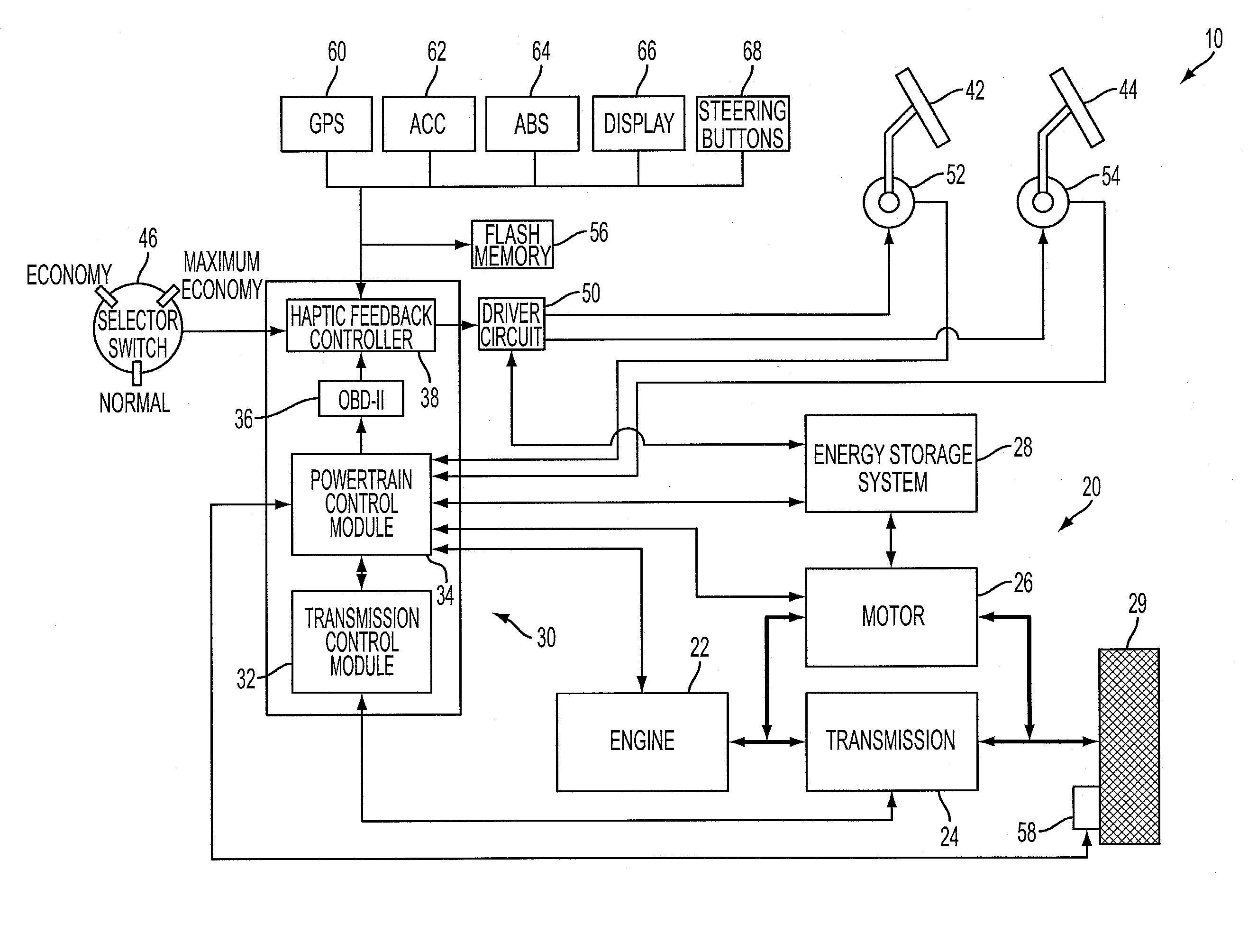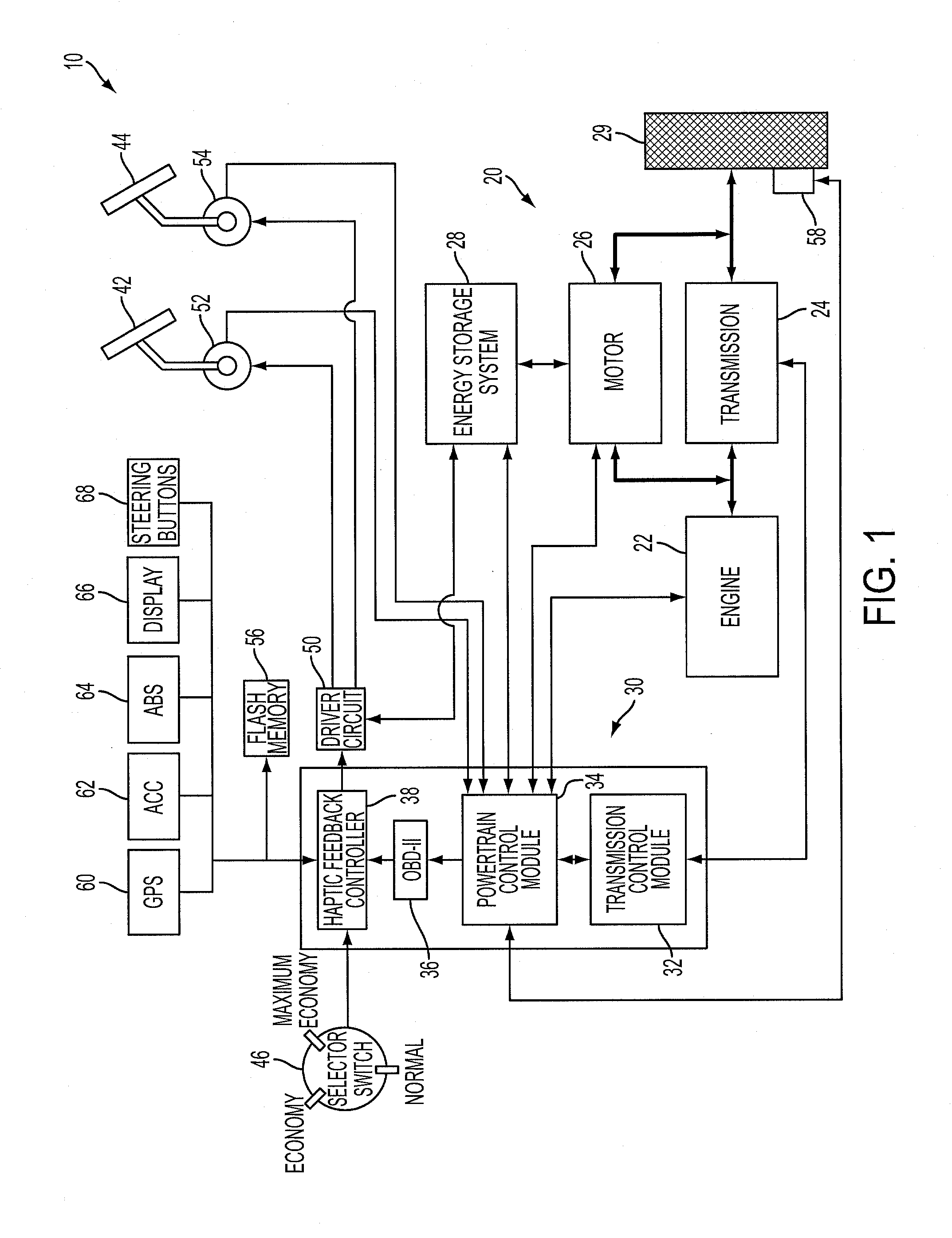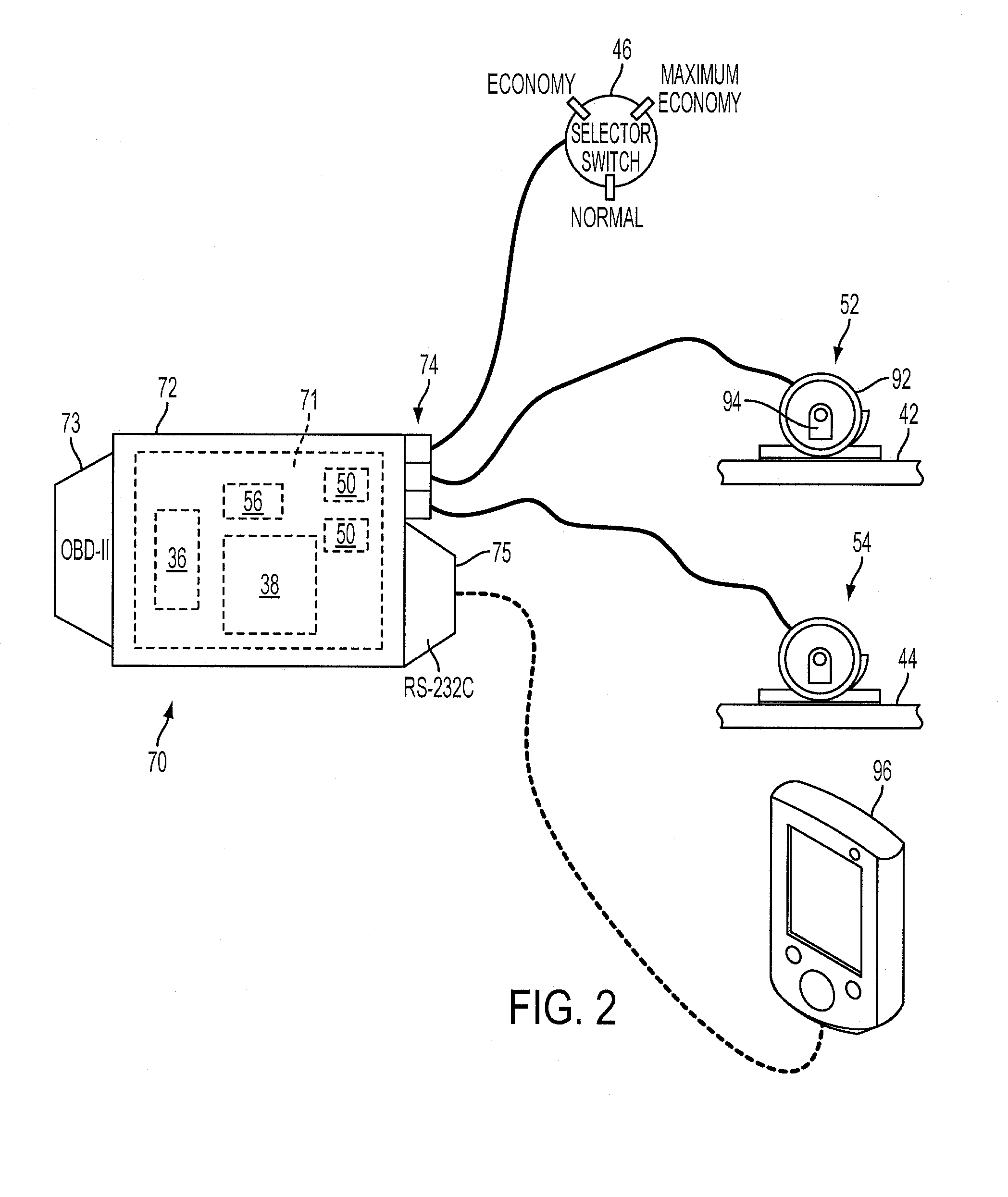Driver Feedback to Improve Vehicle Performance
a technology of driver feedback and vehicle performance, applied in the direction of electric propulsion mounting, braking system, transportation and packaging, etc., can solve the problems of reducing the potential fuel economy gains achieved through regenerative braking, activating dissipative braking, and operating vehicles typically achieve less fuel economy performance of hybrid vehicles, so as to improve overall fuel economy
- Summary
- Abstract
- Description
- Claims
- Application Information
AI Technical Summary
Benefits of technology
Problems solved by technology
Method used
Image
Examples
Embodiment Construction
[0010]Referring to FIG. 1, a block diagram of a vehicle system 10 is shown. Vehicle system 10 may include a propulsion system 20 including an internal combustion engine 22 that may be used to supply torque to at least one drive wheel 29 via a transmission 24. Vehicle system 10 may also include a motor 26 that may be used to supply torque to the engine and / or drive wheels of the vehicles during some operations in what may be referred to as a hybrid vehicle. Motor 26 may also be operated to selectively absorb torque from the engine and / or drive wheels by performing a generator function. Torque absorbed by motor 26 may be converted to an energy form suitable for storage in an energy storage system 28. As one example, motor 26 may include an electric motor and energy storage system 28 may include one or more batteries for storing electrical energy. As another example, motor 26 may include a hydraulic motor and energy storage system 28 may include one or more vessels suitable for storing...
PUM
 Login to View More
Login to View More Abstract
Description
Claims
Application Information
 Login to View More
Login to View More - R&D
- Intellectual Property
- Life Sciences
- Materials
- Tech Scout
- Unparalleled Data Quality
- Higher Quality Content
- 60% Fewer Hallucinations
Browse by: Latest US Patents, China's latest patents, Technical Efficacy Thesaurus, Application Domain, Technology Topic, Popular Technical Reports.
© 2025 PatSnap. All rights reserved.Legal|Privacy policy|Modern Slavery Act Transparency Statement|Sitemap|About US| Contact US: help@patsnap.com



